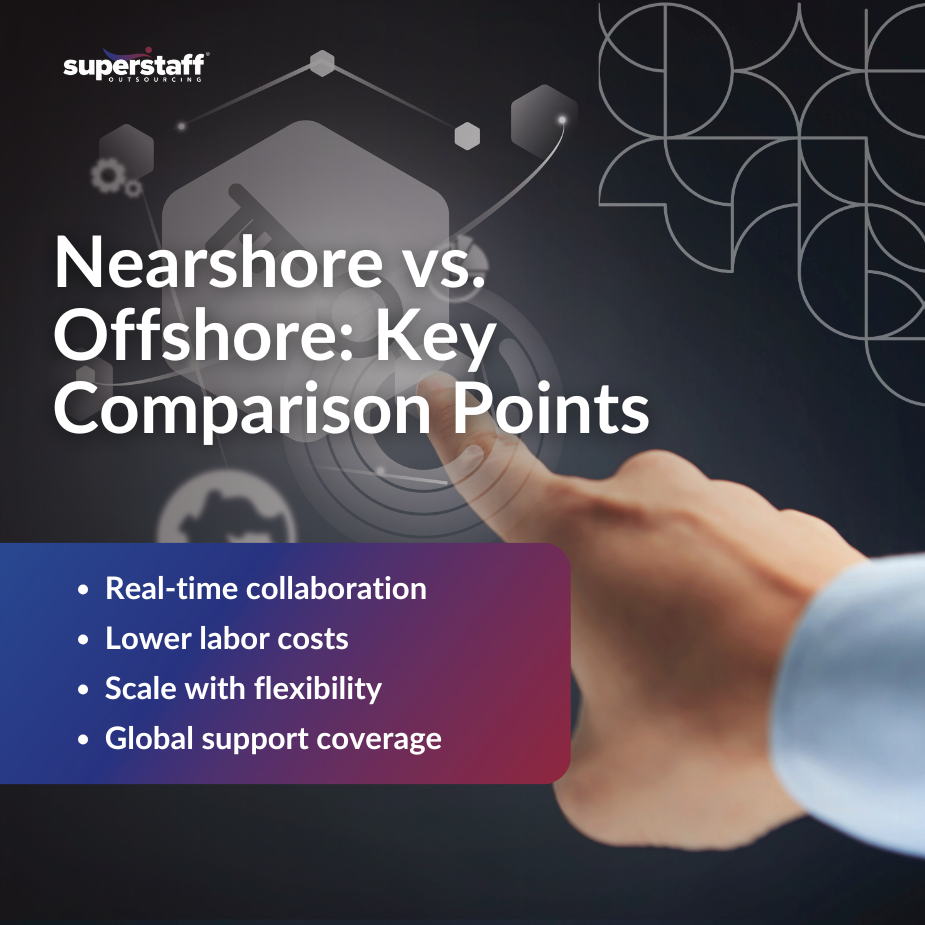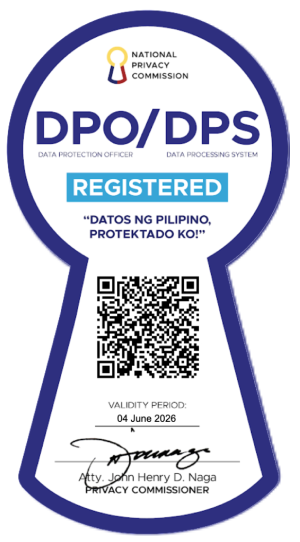
Companies ready to scale often find themselves asking one key question—nearshore or offshore? Outsourcing remains a proven path to operational efficiency, talent access, and rapid growth, but choosing the right model can either boost or bottleneck your momentum. If you’re a decision-maker looking to expand customer service, IT, or back-office support, this blog is your roadmap.
We’ll unpack the strengths of nearshore vs. offshore outsourcing so you can confidently choose the model that best aligns with your strategic goals. Let’s settle the nearshore vs. offshore debate once and for all.

Nearshore Outsourcing Offers Real-Time Collaboration Without the Red Tape
If your business depends on tight feedback loops, live collaboration, or agile development sprints, nearshore outsourcing has major advantages. Proximity to the U.S. allows nearshore partners to operate within your time zone or within a few hours’ difference. That means faster turnaround times, easier project oversight, and fewer delays.
The alignment isn’t just about the clock—it’s also cultural. Nearshore professionals often share more workplace norms, communication styles, and even holiday calendars with their U.S. counterparts. That makes it easier to build rapport, trust, and efficiency.
In the broader nearshore vs. offshore conversation, nearshoring stands out for its ability to provide fast, responsive service with minimal lag and friction. That makes it an ideal choice for companies that need speed and shared working hours.
But what if your business is laser-focused on driving down costs and accessing a broader talent base?
Offshore Outsourcing Maximizes Cost Savings and Access to Deep Talent Pools
Offshoring is still one of the most cost-effective ways to scale operations without compromising quality. Many offshore destinations offer strong business process outsourcing ecosystems and English-speaking workforces capable of handling complex tasks with professionalism and care.
Offshore teams can cover around-the-clock shifts due to time zone differences and manage high-volume tasks with efficiency. Their experience in providing services to global clients creates a strong foundation for reliable delivery.
In the nearshore vs. offshore evaluation, offshoring pulls ahead when affordability and scale are non-negotiables. The global labor market makes it possible to access niche skills without the overhead costs of local hiring. Offshore staffing models offer a depth of expertise that can match the demands of fast-scaling businesses.
Still, the decision isn’t just about cost or proximity. It’s also about long-term potential—and that’s where the nearshore vs. offshore tradeoff gets interesting.
Comparing Risks and Scalability: Which Model Supports Long-Term Growth?
One of the most critical factors in the nearshore vs. offshore decision is how each model aligns with your company’s scaling roadmap. If you’re planning a steady rollout of services or plan to scale regionally, nearshore teams offer agility and fewer regulatory barriers. The ease of onboarding and similar workweek schedules allow for more nimble pivots, especially for midsize firms entering new markets.
On the other hand, if your business is anticipating fast-paced growth or serving customers in multiple time zones, offshore outsourcing is built for scale. Many countries have robust infrastructures and deep talent pools that can support large operations across a wide range of functions.
Each model comes with its own risks. Nearshore teams might have slightly higher labor costs, while offshore setups might require more lead time for onboarding and training. But when evaluated against your long-term growth strategy, both options in the nearshore vs. offshore spectrum can become vital tools—when used strategically.
Operational Priorities: What Do You Value Most—Speed, Cost, or Control?
To make the right decision, you need to match the outsourcing model to your company’s operational goals. Are you racing to launch faster than your competitors? Nearshore is likely the better fit. Are you under pressure to reduce costs while expanding service coverage? Offshore delivers value at scale.
If control and collaboration are your top concerns, nearshore outsourcing benefits your workflow. If budget flexibility and multilingual support are critical, offshore might win.
More companies today are also exploring hybrid outsourcing—combining both models. A nearshore team might handle core operations, escalation management, or client-facing roles, while an offshore team manages back-end processes or high-volume tasks. The hybrid model provides balance: cost savings from offshore with real-time responsiveness from nearshore.
When weighing nearshore vs. offshore, this hybrid option is increasingly attractive for fast-growing businesses seeking the best of both.
And that’s exactly what SuperStaff enables for our global clients.
SuperStaff Offers Both Models—With the Same Commitment to Quality and Partnership
At SuperStaff, we don’t believe in a one-size-fits-all solution. We offer nearshore and offshore teams that are customized to your growth stage, sector, and support needs. Our nearshore operations in Colombia are ideal for U.S. companies that value cultural proximity and time zone overlap. You get real-time support without sacrificing depth or scalability.
Our offshore teams in the Philippines deliver high-quality service, technical support, and back-office capabilities at a competitive rate. Whether you’re a startup navigating high-growth mode or a midmarket firm optimizing efficiency, we can design a model that works for you.
What sets SuperStaff apart is our ability to integrate seamlessly into your existing workflows. From onboarding to performance management, we ensure your outsourced teams are just as aligned and committed as your in-house staff. Our flexible contracts, outcome-based KPIs, and collaborative project management frameworks make it easy to evolve as your needs change.
So, when you weigh nearshore vs. offshore outsourcing, remember—it’s not just about location. It’s about who your partner is.
Choosing the Right Model: Nearshore vs. Offshore
Nearshore and offshore both support growth—but in different ways. If you value collaboration, time zone alignment, and fast adaptation, nearshore might be the best fit. If your top priorities are budget savings, scalability, and talent depth, offshore is a proven model.
The truth is, the right answer to what is the difference between nearshore and offshore outsourcing comes down to your current operational priorities and future vision. There’s no wrong model—only a wrong fit. And that’s why working with a provider who offers both is your best bet.
Connect with SuperStaff to explore both nearshore and offshore options—and build a global team that meets your growth goals with confidence, control, and cost-efficiency.





